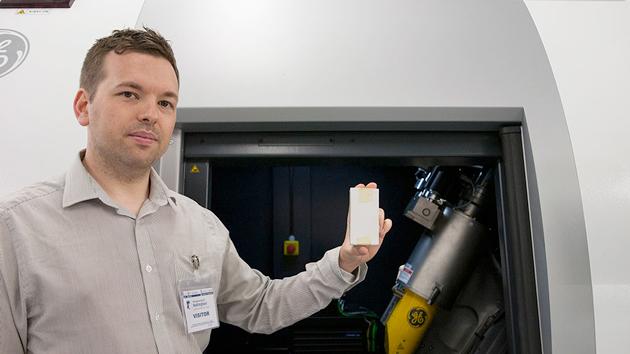University of Nottingham
Latest

How to guesstimate the number of alien civilizations in a galaxy
“Before Drake's work, this question would have seemed to be beyond the realm of scientific inquiry,” Westby told Engadget. fp is the fraction of those stars that have planets. fl is the fraction of those planets that actually do develop life at some point.

AI is already beating us at our own game
Although modern AI systems still have trouble deciding whether or not to flip that stranded tortoise in their path, they're already outpacing the intellectual capabilities of their creators in a wide variety of fields. From beating grandmaster Go players to outguessing cardiac surgeons, lipreading to audio transcription, neural networks and machine learning have already surpassed humans -- and that list is only going to grow longer.

AI can predict heart attacks more accurately than doctors
An estimated 20 million people die each year due to cardiovascular disease. Luckily, a team of researchers from the University of Nottingham in the UK have developed a machine-learning algorithm that can predict your likelihood of having a heart attack or stroke as well as any doctor.

X-ray machine used to disappoint 'Star Wars' fan
Back in the day, British Star Wars fans could send off for a figurine enclosed in an opaque white box. Of course, if you wanted to peek at whatever was hidden inside, you'd have to open the packaging, which would take a massive chunk off the value. Without it, however, you'd never know what was inside, with toys ranging from standard-issue models through to ultra-rare Boba Fett pieces that are now worth around $8,000. UK collector Dave Moss paid just $8 for one such box, and began to wonder if it was possible to peek inside using more modern methods.

Researchers find space travel prolongs the life of worms
We've seen research that suggests prolonged space travel could have some adverse effects on the human body, but it looks like there could be some real benefits as well. As BBC News reports, a new study conducted on Caenorhabditis elegans worms sent to the International Space Station has revealed evidence that the trip to space actually slowed their aging process. Specifically, researchers from the University of Nottingham and others institutions part of the ICE-First project found that the time in space reduced activity in a group of genes that have been shown to prolong the worms' lifespan when suppressed on earth. Of course, these are worms we're talking about, but this particular species is often used for such research due to its biological similarities to humans, so the discovery could well lead to more insight into how we age in space as well. Those curious can find the full paper linked below.

Periodic table blasted onto a single human hair using ions, human reportedly wants his hair back
We've seen the Torah inscribed on a surface the size of a pin, and the atomic pen making inroads into even more impressive feats, but tiny writing never ceases to amaze us. Now, it seems, the entire periodic table of the elements has been scribed onto a single hair -- that of Martyn Poliakoff, Professor of Chemistry at the University of Nottingham. The project involved magnifying the hair under an electron microscope, and 'writing' on it with ions using an ion beam writer to imprint the entire table of elements onto the hair. As you'll see in the video after the break, the results are quite impressive albeit very small.

What would happen if you put your hand in the Large Hadron Collider? Er, well, um... (video)
Scientists, they've made our lives infinitely easier, healthier, and longer, but sometimes even their giant intellects can be stumped. Here we have a perfect example of such a scenario, where the seemingly innocuous question of what might happen if one were to dip a hand inside the Large Hadron Collider has generated a wide range of hypotheses, none of which sound particularly assured of being correct. The trouble is that, aside from the known unknowns -- such as whether the accelerated protons would crash and explode upon contact with your hand or just pass through -- there are surely unknown unknowns that will likely become apparent only once you try to do the act itself. So, any volunteers?

Sonic 'laser' developed, makes quite an impression at 80s night
A researcher from the University of Nottingham and his Ukrainian colleague have built the world's first Saser: a device that generates a highly concentrated beam of sound waves at terahertz frequency. Not unlike the frenetic warblings of Welsh chanteuse Bonnie Tyler, when alternating layers of aluminum arsenide and gallium arsenide are exposed to an intense beam of light, photons are released, causing them to bounce back and forth between the layers. Eventually the sound waves combine into much stronger, highly concentrated sounds in which every particle is synchronized -- creating an ultra-high frequency "phonon" beam. Although practical applications for this technology have yet to be developed, it is hoped that Sasers could someday be used to probe and manipulate electronic devices at the nanoscale level, with results that include terahertz-frequency processors which would make the "computers of the future" a thousand times faster. Video after the break.[Via Gizmag]


